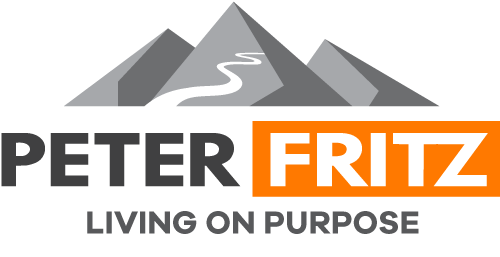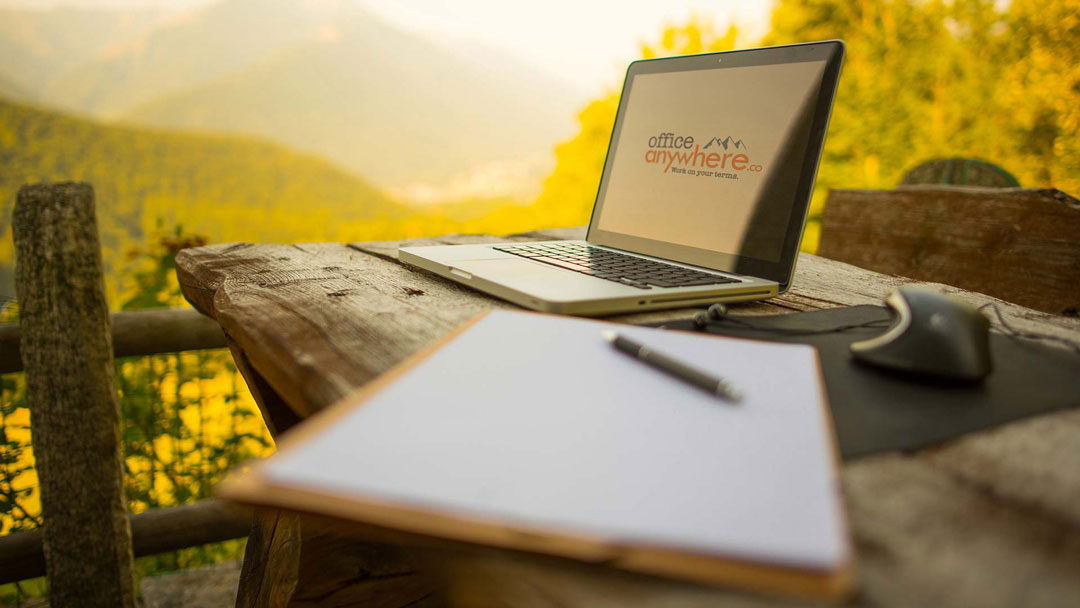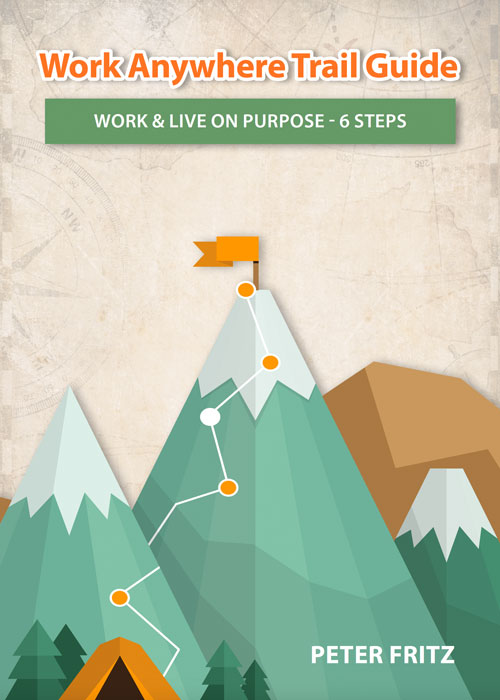[smart_track_player url=”http://traffic.libsyn.com/midlifetribe/069_Tools_to_work_from_anywhere.mp3″ background=”#f2f2f2″ social_gplus=”false” social_linkedin=”true” social_email=”true” ]
When I was a kid, our family had one telephone. It was a heavy green device with a rotary dialer, a separate handset with a curly cord, and another cord between the base and the kitchen wall. Because it was fixed to our home (as was everyone’s back then) we worked around its limitations. Playmates could only call after school; dad’s clients could only reach him after work, and receiving a call on a Saturday often meant charging in from the back yard and collecting a stubbed toe or grazed elbow on the way.
Back then, we did things at pre-agreed times. We met under the clocks at Flinders Street station at midday or popped in for a coffee at a friend’s house at four. People were generally punctual because if they weren’t, there was no way to reach them once they left their home or office.
I was actually the first in our family to buy a mobile (cell) phone. It cost me thousands of dollars and had a battery life of about two hours. When PDAs (personal digital assistants) became a thing, I had to have one of those, too – first a Sharp Zaurus, then a few Pocket PCs and later, a swag of Palm Pilots.
My buying habits suggested, even back then, that I wanted to be organised and mobile. I craved autonomy and the power to work efficiently from anywhere; I just needed the technology to catch up.
Fast-forward to today, and all of us are spoiled for choice. Thanks to the Internet, affordable cloud-based software, and the democratisation of knowledge, my dreams (and yours) are realised. We really can work from almost anywhere!
So following on from my last post (earning the right to work remotely), the question becomes, what tools do we need to be successful as a remote worker? Based on my 20-plus years of untethered work, I believe they fall into three closely-related categories:
- Accountability
- Communication
- Productivity
Let’s look at each of them, including the tools that enable me to serve my employer and my clients in a professional, efficient manner. As we go through them, you’ll soon notice there’s lots of overlap. Your job, therefore, is to select the fewest number of tools to achieve the outcome of being an accountable, collaborative and productive worker. Nail those and you’ll be a highly sought after asset to your employer, your clients and your own business.
But first, a tip. I know from experience that it’s natural to resists learning a new tool, even if it promises to save us time and money. Typically, our lizard brain trots out the excuse that we’re too busy to ‘learn yet another tool’. Its job (the Amygdala) is to stop us doing anything unfamiliar; disguising it as mortally dangerous to our safety and well-being. My advice is to ignore such messages and instead, invest a fraction of your time learning how to do things better. You’ll make up that ‘lost time’ in spades soon after, I promise.
Accountability
One of the greatest benefits of working remotely is the elimination of distractions. I can’t work with noise unless I choose it myself (Roger Waters, Of Monsters & Men or Coldplay), or it’s the white noise of a public space like a cafe. I must control my environment. If Sophie’s crapping on about her rebellious teenage daughter just three feet away, or Geoff decides to wander up to my desk to brag about his team’s win over the long weekend, I’m screwed. Nothing gets done.
So, working remotely benefits my productivity and my happiness by giving me long, unbroken stretches of deep work. However, if I’m not careful, it can mean I forget to tell my colleagues where I’m up to with a project. The problem with that is, most people are sceptical and they’ll assume that if they haven’t heard from us in a while, we must be surfing, shopping or working our way through a Netflix marathon.
So, the number-one thing we must be when working remotely is accountable. Your colleagues, clients and bosses need to know what you’re doing and how things are tracking. Over time – if you’re consistently good at delivering projects on time – they’ll loosen the reigns a bit and expect fewer updates. But the rule of thumb is, more transparency is better than less.
The way most people handle this is via spreadsheets and e-mail. There are two problems with this. One, there’s no central repository for viewing project status, and two, email is a terrible audit trail of communications. To be efficient, you need a single source of truth, not a scattered collection of files and emails across multiple domains.
A Single Source of Truth
I’ve tried a range of tools to manage projects, including Trello, Asana and Monday. However, the one I keep coming back to is Basecamp. As I mentioned in my previous post, it’s simple to learn, easy to use, and it does most things really well (task lists, scheduling, file storage, messaging and live chat). Also, you get unlimited projects and unlimited people for USD$99 a month. That might sound pricey, but when you consider the tools it replaces, it’s actually good value.
Another thing I like is, the guys who created Basecamp are living proponents of remote work, with 50 team members scattered across 32 cities around the world. Jason Fried and David Heinemeier Hansson literally wrote the book on remote work, so they understand what people like us need (and more importantly, what we don’t).
If Basecamp’s pricing is a bit rich for you, try PayMo. They offer a free plan for single users that includes project management, time tracking, reporting and 1GB of storage. However, even their dearest plan (which includes a tonne of extra features, including unlimited storage) is less than $USD16 a month.
Both Basecamp and Paymo include file storage in their plans, but if a central file repository is all you need, then Dropbox is the gold standard. They have a free plan with 2GB of storage, plus two other levels with 1TB and 2TB respectively, plus a bunch of smart features for file sharing, offline access, security controls (including remote device wipe) and multi-device syncing.
A possible alternative to Dropbox is Google One, although I’m a little wary of their capacity to scan content for building advertising data. I currently use its Backup and Sync feature for online backups, but I’ve also used it for sharing files with clients.
If you need to work on a document with someone else in real-time, try Google Docs – a free, cloud-based alternative to Microsoft Word, Excel and PowerPoint. As a Windows Office user since Windows 95, I’ve only just started using it (old habits die hard), but so far, it’s excellent.
How many hours did that take?
Our lives are metered out one hour at a time, and those hours add up very quickly. At my age (51), you become acutely aware of time’s value, so monitoring it and charging for it becomes essential. Whenever I allow someone to waste my time, I’m letting them steal a portion of my life that could be spent with my kids or my wife, my mum or my dad. That’s something I cannot accept.
If you value your life (your time), track how many hours you’re spending on projects and tasks. Tools like PayMo have timer functionality baked into their software, but another tool I really like is Harvest. I’ve used it for over three years to monitor my hours, broken down by client, project and task. It reminds me when there’s a period of inactivity on my computer, and even emails me when I forget to stop a timer. It can also track project-related expenses, billing rates and so on. Other alternatives you might consider are Toggl, Hours or MyHours.
Of course, you’ll want to get paid for your work and report all expenses for taxes, and there are dozens of tools you can use for that. I’ve been a satisfied Xero user for over five years. That’s not to say it’s the best (it probably isn’t), but it’s been a smooth experience so I’ve stuck with it. I especially like that it’s popular with accountants. Mine has his own log-in to my account so he can jump in when required and fix my frequent errors.
Freshbooks is a popular alternative, with a delightful, jargon-free UI. Sadly, it’s not available in Australia, where I live. Another one you might consider is Quickbooks.
Communication
There’s no better calling card than the quality of your work. A close second is the quality of your communication.
Also, few things position you in the minds of others than the way you communicate, and that includes the channels, frequency and style of your written and spoken words. All of them should be tailored to your audience and the expectations and protocols they carry.
For example, some of my colleagues refuse to engage with Basecamp – even though its messaging and chat features are excellent – and will only respond to emails. For them, learning a new tool, even a super-simple one like Basecamp, is a bridge too far. I’ve had some who are hopeless at responding to emails and never engage with a project unless I sit with them face-to-face.
On the other hand, I’ve worked with people who are decisive, trusting, and happy to communicate via the method that’s fastest, like SMS.
The point is, it’s important to know your audience and to communicate through the channel/s they’re most comfortable with, at a frequency that gives them peace of mind, and in a style that’s relatable to them. I’ve worked for the same company for 22 years, and yet they still want a spreadsheet once a fortnight to see what I’ve done. We communicate almost daily via email, we chat on the phone every few days, and once every month or two we’ll meet up a face-to-face.
I use a couple of tools for communication – email being the most obvious and common. One I can’t live without, though, is Grammarly. Proofreading your own work is fraught with risk (I rarely notice my errors), so it’s important to have someone or something check your work before hitting SEND or PUBLISH. Grammarly checks everything I write as I write it – pointing out spelling and grammar issues and offering suggested changes as I go. It works with Chrome, Safari, Firefox, Outlook and Word. If you write anything for work, you need Grammarly.
Speaking of writing, I have an 80,000-word book sitting on my computer that’s yet to see the light of day. I wrote it a few years ago when I was neck-deep in Midlife Tribe. Back then, it was a monumental task to write it, and I don’t think I would have completed it without the help of an editor in the UK named Dan Carey. Throughout that project, we used Slack to maintain updates to the manuscript, bounce ideas around and lock in finalised chapters as we went. It was brilliant.
While not as feature-rich as Basecamp, Slack excels as a communication tool – enabling text, voice, video and screen sharing in the one package. File storage is limited, but it integrates with a tonne of other tools, so you can augment the spots where it’s lacking with products like Dropbox, Google Drive, Salesforce and many others.
I might publish that book someday, but thanks to Dan and Slack, it’s essentially complete and ready for packaging.
Other excellent communication tools include Basecamp (the Campfire, Message Board and Ping features), Google Docs (live document collaboration), Skype (chat, screen sharing, plus voice and video calls), Goto Meeting (similar to Skype, but with more features), Zoom (similar to GoTo Meeting), and Google Hangouts (similar to Skype).
Sometimes one of the best ways to communicate an idea is with a short video. I’ve used half a dozen over the last few years, but the two that really stand out for me are Loom and ScreenFlow. Screenflow is hands down my favourite thanks to its amazingly effective video editor. I’ve used at least half a dozen video editing tools – from Premiere Pro down to iMovie – but ScreenFlow is easily my favourite.
The bottom line is, you really want to tie all project-related communications to the project itself – if possible. That way, you’re not fishing through old emails, calls and text messages to try to determine who said what to whom about such and such. I know it’s not always going to be possible, but if you can use a tool like Basecamp, Paymo or Slack, you can still share updates via email and have them tracked within the application.
Productivity
With the exception of e-mail (which can easily become a productivity killer), all the tools mentioned above will help you work more productively – providing you take the time to learn them. Thanks to most providers’ own tutorials and the blessing that is YouTube, it’s all pretty easy these days.
However, there’s one tool and two practices that’ll give you more productivity gains than just about anything.
- Disable all non-essential device alerts. For me, that means no social media, email or project management tool alerts. For you, it might be a different combination, but the bottom line is, you can’t be effective if something is ‘binging’ you all the time. The disruption to whatever you’re working on is too great. Switching your attention from one thing to another can have a 40% impact on the time it takes to complete both. Here’s a great explanation of switching costs.
- Schedule everything with one app. Whether you use your phone’s calendar app, Outlook, Google Calendar or another tool, make sure everything you do is scheduled, and everything you schedule syncs to the one app on your phone.
- Prioritise everything from the most important to the least, and stay with one till it’s done. If you can’t get everything done this way, you’ll never get them done anyway. My calendar always has between two and four priorities for the day (numbered 1 to 4), and I always start with no.1 and don’t budge until it’s done. To clarify what I mean by ‘done’, it might mean ‘completed’ or it might mean I work on it from 7:00 am till 9:30 am because that’s what I’ve allocated to it for the day.
What a brilliant invention e-mail was. What a scourge it’s become. Few things destroy productivity and creativity quite like e-mail (with the possible exception of Cats of Instagram). I have a simple set of rules for e-mail that has transformed the way I use it, and the level to which I let it disrupt me.
Many people live inside their inbox and as a result, they never get any real work done. Rather than repeat my practice here, I suggest you read this post about kicking your email in the b*lls.
Should I have a morning ritual?
Short answer: yes. Long answer: you needn’t meditate or journal or face the sunrise, chanting affirmations – but create something that works for you, because how you start your day has an enormous impact on how the rest of the day goes.
I’m a fan of starting early (between 5:30 and 6:00 am) because there are no distractions, I feel like I’m getting a jump on the day, and I can work on something that matters to me (like this blog) before tackling less enjoyable tasks. That way, even before I begin the ‘normal’ part of my day, I feel like I’m winning.
Some people exercise first thing in the morning (I’m woefully sporadic); others like to visualise stuff (I do that better when it’s not forced – like when I’m driving). The point is, having some kind of routine that you repeat each morning does a few important things. First, it shows that you’re in control of your life. Instead of hitting the snooze button five times, you’re waking at a time you decide so you can do something you want to do. There’s a big difference.
Second, it eliminates the panic state most people experience when they wake. Instead, begin your day at a deliberate pace. And third, it creates incremental progress on something that matters to you – whether that’s exercising, writing, creating art or developing a piece of software. Great progress doesn’t happen in surges – it happens 1% at a time, but compounded over a stretch. Do a little of something you care about each morning and you’ll be amazed at where you’ll be 12 months out.
More Productive and Less Stressed
I recently lost a friend and colleague after she suffered a cardiac arrest. I don’t know exactly what triggered it, but I know she was stressed about work because she called me a few weeks before she died. Lizzie was only 45.
I had a mild heart attack in my late thirties, and I remember how terrified I was. The thought of leaving my little girls behind scared the hell out of me. These days, I’m acutely aware of the symptoms when they arise. Typically, any tightness in my chest or throat is my body telling me to slow down or take a break. I’ve learned that pushing through does two things. It kills my productivity (which makes pushing through pointless), and it negatively affects my health (equally pointless).
These days, I’m less stressed but more productive because of a few key practices.
- I take short breaks throughout the day. Check out the Pomodoro technique.
- I stand for part of the day, thanks to my brilliant Uplift electric desk. Sitting is considered the new smoking, so alternating between sitting and standing throughout the day keeps me fresh and a lot less stiff than I used to be.
- I time block my work. If I say I’m going to spend two hours on a task, I don’t let anything interrupt that.
- I change locations. I’ll work on our backyard deck, in my garage or in the dining room. And when the weather is nice, I sometimes jump in my convertible and head for the mountains or a nearby lake. You’ll be amazed at what you can accomplish in your car with the voice memo app on your phone. This remains one of my ultimate productivity hacks.
I believe with all my heart that working remotely is one of the best things you can do for your health, your happiness and your work. Being able to work (and therefore, live) on your terms radiates into so many areas of your life, it has the ability to literally change your life.
By using a few powerful tools and some results-driven practices, I can draft a website plan in my home office one day, then write a course guide on Mount Torbreck the next.
And that’s exactly what I’m about to do.
![]() .
.
[ss_click_to_tweet tweet=”Thanks to the Internet, affordable cloud-based software, and the democratisation of knowledge, we really can work from almost anywhere.” content=”Thanks to the Internet, affordable cloud-based software, and the democratisation of knowledge, we really can work from almost anywhere.” style=”5″ link=”1″ via=”1″]
Affiliate Notice: If I recommend something to you (e.g. a book, software, a physical product, etc.), it’s because I’ve bought it, used it and benefited from it. Yes, I might get a small affiliate commission if you buy it, but it won’t cost you any extra. Besides, you don’t have to buy it through me, and if you don’t think it’ll help you, then don’t buy it from anywhere.
The Ultimate Goal – A Dedication to Jon James
Yesterday, a giant in my life called up to offer his final farewell. Today, he married his true love, Aurelia, before entering palliative care. He’s only 64, he’s athletic, and he's stronger than most 30-year-olds. But when cancer takes hold, it doesn’t care. Jonathon...
What are the first steps to starting a side business that makes you money?
[fusebox_track_player url="https://www.buzzsprout.com/1079927/5461972-what-are-the-first-steps-to-starting-a-side-business-ep-115.mp3?blob_id=22247092&download=true" title="What are the first steps to starting a side-business? - EP 115" social_linkedin="true"...
The purpose of purpose
[fusebox_track_player url="https://www.buzzsprout.com/1079927/5195959-the-purpose-of-purpose-ep-114.mp3?blob_id=20946406&download=true" title="The Purpose of Purpose - EP 114" social_linkedin="true" social_email="true" ]Recorded with SquadCastSubscribe: iTunes |...
Download the Guide





